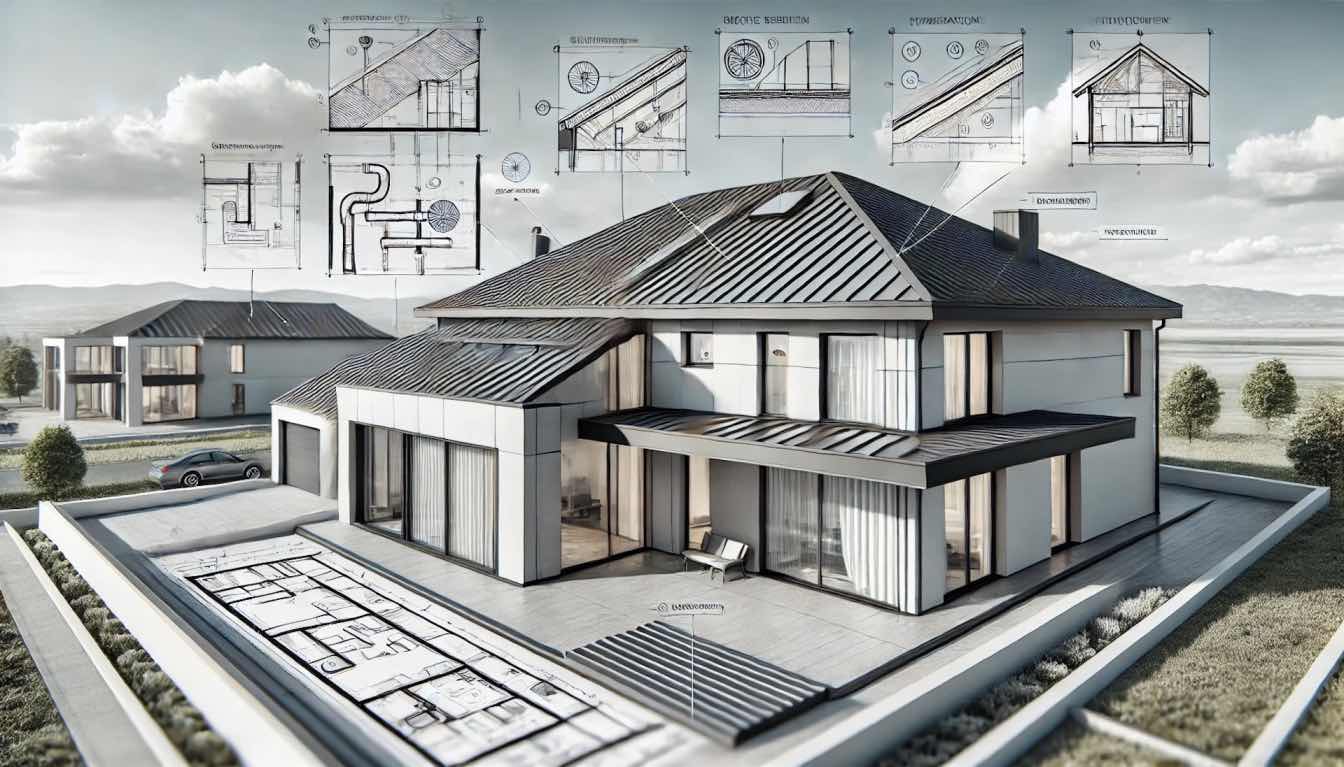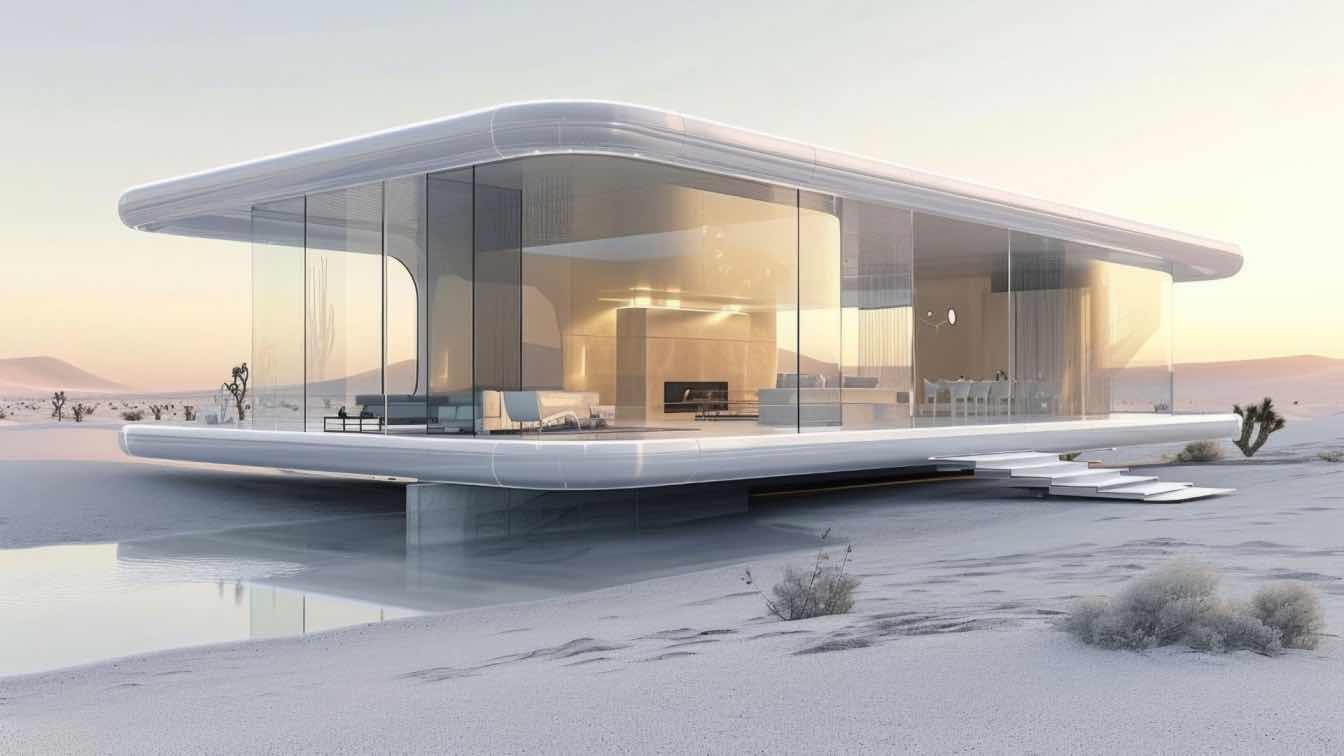The functionality of a roof relies not only on the materials used but also on the architectural elements that define its structure. A well-designed roof contributes to energy efficiency, effective drainage, and overall aesthetic appeal. Understanding these elements helps homeowners and designers make informed choices to enhance roofing performance. In this article, we will explore the essential components that shape roof functionality and contribute to its durability and effectiveness.
1. Roof Pitch and Slope
The roof pitch, or the angle at which a roof slopes, is a fundamental architectural element that plays a significant role in water drainage and snow load management. A steep pitch allows for efficient water runoff, reducing the risk of leaks and water damage. Conversely, flatter roofs often require additional drainage systems to manage water effectively, as they are more prone to standing water issues. The pitch also influences solar panel installation, the choice of roofing materials, and overall building aesthetics. For instance, traditional shingles may work well on pitched roofs while flat roofs often employ membrane systems to ensure waterproofing. Considering roof pitch and slope is essential for optimal functionality.
2. Roofing Materials
The choice of roofing materials is another critical factor impacting functionality. Options range from traditional asphalt shingles to modern green roofs, each offering unique benefits. Asphalt shingles are affordable and easy to install; however, they may require more maintenance and have a shorter lifespan. On the other hand, metal roofs boast longevity and reflectivity, which can reduce cooling costs in warm climates. The trend toward sustainable materials has also gained traction, with options like rubber roofing or solar tiles becoming popular. These materials not only enhance energy efficiency but also align with environmentally conscious building practices. Selecting suitable materials ensures the roof can endure the elements while maintaining aesthetic appeal. Consulting with experts, such as Avenue Roofing roof specialists, can help in making the best choices for specific needs and local climates. Considering the local climate, weather patterns, and long-term maintenance requirements is essential to ensure the chosen roofing material performs optimally over time.
3. Roof Structure and Design
The structural design of a roof directly influences its performance and longevity. Key elements include rafters, trusses, and support beams, all of which contribute to a roof’s ability to withstand environmental factors. Properly designed structures can distribute weight evenly, manage stress from snow loads, and resist wind uplift. Different architectural styles dictate various roof designs. For example, gable roofs enhance ventilation but may not perform as well in areas prone to high winds, while hipped roofs provide better stability. Understanding the implications of these designs can help homeowners choose the right architectural style for their region's weather patterns.
4. Ventilation Systems
Effective roof ventilation is crucial for maintaining temperature balance and preventing moisture buildup in the attic space. A well-ventilated roof promotes airflow, helping to prevent ice dams in winter and reducing heat buildup in the summer. Roof ventilation systems can include ridge vents, soffit vents, and gable vents, each serving a specific purpose. A balanced ventilation system allows for the expansive movement of air, which lowers the chances of mold growth and contributes to energy efficiency. In poorly ventilated roofs, excess moisture can lead to deterioration of materials, structural damage, and increased energy costs. Therefore, investing in a quality ventilation system enhances both the roof’s functionality and the overall health of the home.
5. Insulation and Energy Efficiency
Insulation is another primary element that affects roof functionality. Effective insulation helps regulate indoor temperatures, reducing heating and cooling costs. Roofs that are well insulated will prevent heat loss in the winter and minimize heat gain in the summer, contributing to a comfortable living environment. Types of insulation vary, including fiberglass batts, spray foam, and rigid foam boards. The selection depends on climate conditions, roof design, and personal preferences. Additionally, advancements in insulation technology have led to better-performing options, such as reflective insulation that helps keep spaces cooler. Incorporating quality insulation into the roofing system significantly influences energy efficiency.
6. Drainage Systems
A robust drainage system is essential for maintaining roof integrity. Proper drainage helps to channel water away from the roof and reduces the risk of ponding, which can damage the roof structure. Depending on the roof design, drainage can be achieved through gutters, downspouts, and scuppers. In flat roofs, internal drain systems may be necessary to ensure water flows directly to designated areas. On sloped roofs, gutters catch runoff water and direct it to the ground, preventing water from pooling. Regardless of the type of roof, having functional drainage in place protects the building from water damage and prolongs the roof's lifespan.
7. Roof Accessories and Features
Roof accessories, including chimneys, skylights, and ventilation fans, add functionality but require careful installation to ensure they don't compromise the roof’s integrity. These elements can enhance aesthetics, allow natural light inside, and improve air circulation, but improper sealing or flashing can lead to leaks. The location and design of these features play a pivotal role in how effectively they perform. For example, chimney placement should consider wind direction and structural load to avoid potential issues. It’s essential to engage roofing professionals during installation and maintenance to ensure these accessories function well without creating vulnerabilities in the roofing system.
By understanding and integrating these key architectural elements, homeowners and designers can create roofs that not only offer protection but also improve the building's energy performance and aesthetic appeal. Consulting with roofing experts ensures these elements work harmoniously to meet specific needs and local climate conditions, ultimately leading to a more sustainable and resilient roofing system.





